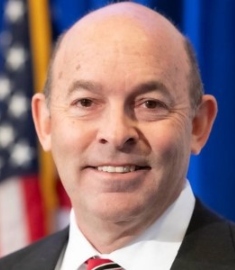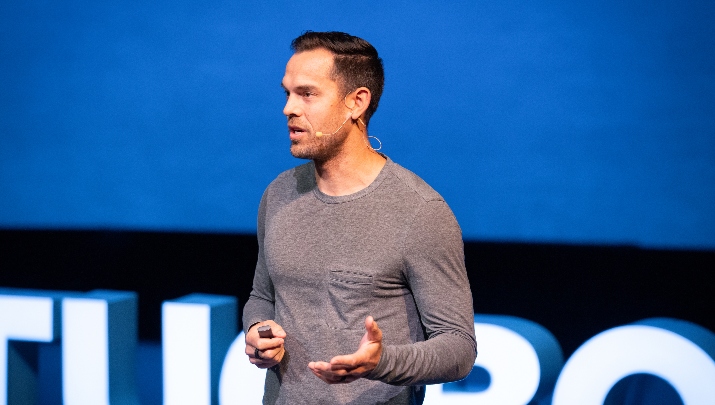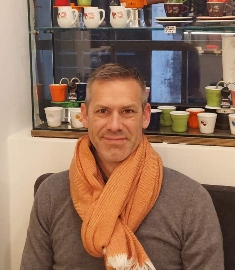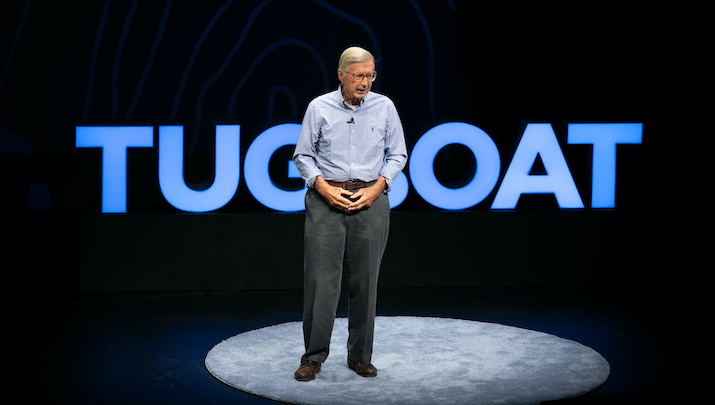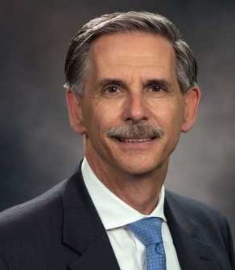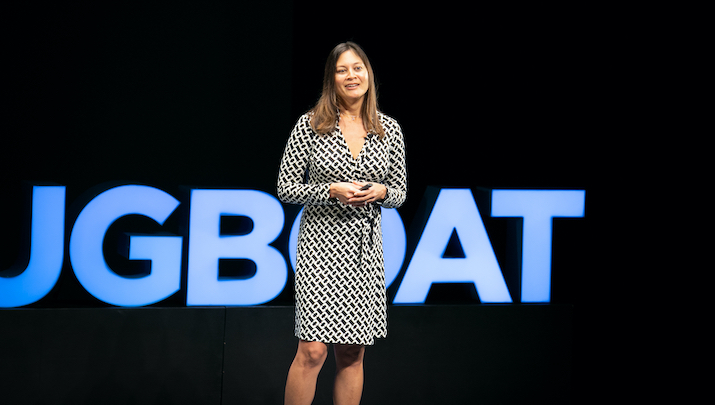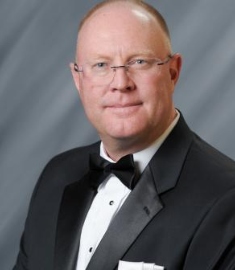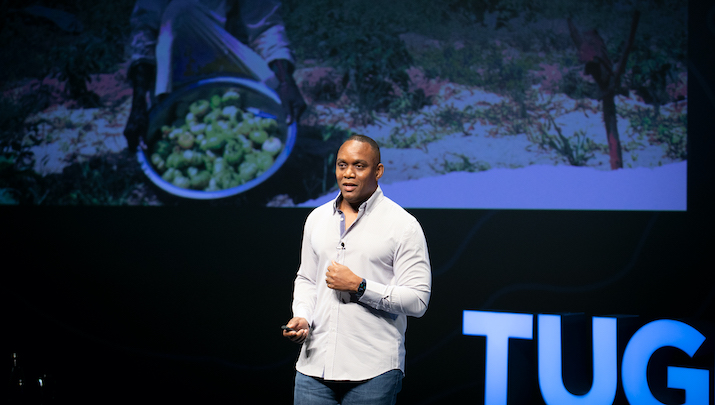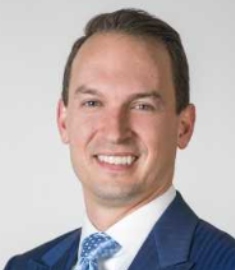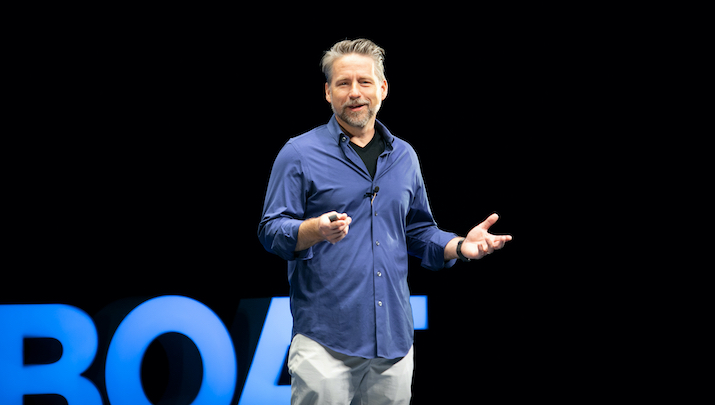One Size Does Not Fit All
I joined my family’s irrigation supply business in 1985, just as they opened their 12th location, and the first outside of California. I guess you could say that expansion was part of my story at Ewing Irrigation & Landscape Supply from the very beginning. As the 3rd generation President & CEO of an Evergreen® family business that now spans 30 states, expansion–through organic growth and acquisition–has been the order of the day and has taught me a plain but profound lesson: one size does not fit all.
Irrigation supply is, in its simplest form, a low margin business. We stock about 3,500 different parts in each branch to enable us to have enough inventory to supply an average job. In California, we found that the population supported locations as close as a 20-30 minute drive apart, and the level of population density dictated how we transported our products, organized our teams, and stocked our warehouses. Our core customer valued proximity and the inventory moved quickly, so that drove our expansion within the state. When we set out to grow into Arizona, our California business model was working well, so we thought we had a solid plan.
Some businesses can just replicate themselves from location to location and it works. Think of Starbucks or Walmart. We quickly learned, however, that this didn’t work for our business.
As it turns out, Arizona is not California. The population density is significantly less, and we found we had to adjust our models at just about every level. The products that worked well in California did not work as well in Arizona and the population couldn’t support stores so close together, so we had to change the way we stocked our supply centers and how we transported material. When we moved into Texas, the population density was more like California, but there were other significant differences. The target customers were bigger, the jobs were bigger, the equipment had to be bigger, and we had to adjust.
Since then, we’ve moved into many new markets, and we are getting better at being market adaptable. We evaluate a new market based on the following criteria of a Metropolitan Statistical Area (MSA): population, Gross Domestic Product (GDP), and above all else, housing growth. What we’ve come to expect is that markets that appear similar by the numbers reliably turn out to be unique.
Not all the surprises created difficulties; we hesitated for a long time before moving into “cold climates,” or ones that experienced the four seasons, imagining that they were not candidates for the type of irrigation systems we had been installing all over the west and southwest. It turns out that this climate created many repeat customers for us; when the pipes froze, as some of them did every winter, the customer would call us in the spring to re-install some of the equipment we had installed just a season before! It’s just part of the process in that climate. This continual base-maintenance has proven profitable and reliable, so we are looking at the East Coast as an area ripe for further expansion.
Up until 2018, most of our growth had been organic, with just a few small acquisitions. In 2018, we made our first significant acquisition of a company that focused on hardscapes, instead of irrigation. Water supply was starting to become an issue and, as a result, customer demands were shifting. Before, everyone had to have a green lawn. Suddenly, people were creating outdoor spaces that used less water.
We spent time learning how to adapt to this business, which proved to be quite different from irrigation. For irrigation, we typically stocked our inventory in warehouses that were 8,000 -10,000 square feet, sitting on roughly an acre of land. For hardscaping, we realized that we needed more land but could get away with fewer buildings, as a lot of the product could be stored outdoors. The product is also much less varied; we stock only about 120 items in an average yard to supply an average job, which simplifies many aspects of the process.
The most significant advantage of acquiring the hardscape businesses and entering this new market is that, as we look to expand, we already have a well-established and extensive customer base through our irrigation businesses in many areas of the country. Thanks to our name recognition and the great relationships we have with our customers as an Evergreen® company, we have found that when a customer decides to shift toward hardscape, they turn to us.
As Ewing grew organically, we learned that moving into a new market requires firepower and a willingness to tweak our model. When the firepower or the changes required appear too great, we make the call to stay out of that market for now. When we started making acquisitions, adaptability and willingness to reimagine established practices were again the keys to success.
Despite, or maybe thanks to all these learnings, we are looking toward the coming years with optimism. Between the expansion of the hardscape business as we develop it in parallel to our irrigation business and the organic expansion that now seems promising in colder climates, we see a path to future growth that has us excited. But if I have learned anything through the last 15 years, it’s to never get complacent, and to expect that even the brightest of futures will require that we stay nimble, open to change, and willing to roll with the surprises.
Extraordinary Growth Through Partnership & Innovation
When Bryan Papé founded MiiR, an Evergreen® company that makes and sells stainless steel drinkware, he had big ambitions. He aimed to create a company that would grow, be profitable, and make his community and the world a better place by giving back 3% of revenue. Over and over, people told him it couldn’t be done.
In the twelve years since, MiiR and Bryan have proven them all wrong. Through a commitment to innovation and generosity, MiiR has established partnerships with a wide array of companies to create innovative and popular products, and they have donated over $3 million to causes all over the planet.
In this Tugboat Institute® talk, Bryan shares his experience founding and building MiiR, and the strategies that have allowed him to achieve remarkable success.
Watch and be inspired to tune the naysayers out and pursue your vision.
A Business Built on Reciprocity
It may go against what we’ve all been taught about business, but I have come to believe that collaboration, not competition, is the key to business success. There are guidelines and limitations, of course. For me, the most important one is finding like-minded people, who share a vision of the right way to live and conduct themselves, and who are eager to contribute something of value to the world. I recently learned a new word for this– Evergreen®.
My story started like many, with a chance meeting. I was running my home repair business, Redeemers Group Inc., in Memphis and, through some friends in the East, I was contacted by a product supplier in Connecticut who was seeking a partnership. They had a basement waterproofing business and some high-quality products and wondered if I might be interested in learning their method for reaching new customers and their process for waterproofing. In exchange, as my business increased, I would sell their waterproofing products to my new clients. We didn’t have a contract, but it made sense and I trusted them, so I agreed. It led to significant growth for my business and, as a result, increased sales for them. Our customers got great service and great products. It was a win-win-win. This experience opened my mind to a new world of possibilities.
A few years down the road, I had the great fortune to meet Greg and Dave Thrasher, from Omaha, NE. Greg founded Supportworks Inc., a foundation repair (and today, a Certified Evergreen®) company, and his son Dave is now President. In the Thrashers, I recognized the kind of kindred spirits I was looking for, and although none of us had become aware of Tugboat Institute® yet, we became fast friends. We struck a deal similar to the one I had made with the company in Connecticut – Supportworks taught us their foundation repair process, and as my business grew, I sold more of their products. Another win all around.
Now I had two collaboration partners who were suppliers and I loved the growth the partnerships had created. My inclination for collaboration was growing stronger and I found myself looking for opportunities to collaborate further at every turn. My mindset had shifted, and I was ready for more.
My next opportunity took me back to Connecticut. One best practice I had learned from the basement waterproofing company in Connecticut was to share materials – about our company, our products, and the repair process – with a new client in advance of the first site visit. Among other items, we provided a book the company had created that explained the specific repair process in detail. I noticed over time that their guidance was great, but that there were gaps; most notably, we were doing a lot of mold remediation, and there was no book for that. So, I wrote one. I took it back to the supplier and asked if they’d be interested in buying it and in offering it to the other contractors they worked with and they said yes. It is now sold all over the US, Canada, and Europe.
By this point I was a true believer in this type of supply chain collaboration and was highly inclined to innovate further. When working on one job, trying to problem-solve the process of lifting a house off a certain kind of foundation, I had a Eureka moment and imagined a device that would help the process. I had a friend create some CAD drawings and took them to Dave and his team at Supportworks. They thought it looked great, we got it patented, and now they sell it to all their dealers.
Private equity has come knocking several times in recent years and it’s easy for me to send them away. I know that without remaining Private, among many other things, I would not have the freedom and the independence to pursue Pragmatic Innovation collaborations like these with industry peers. Innovation requires the freedom that being an Evergreen company provides. My experience collaborating with like-minded supply chain peers - notably those with Evergreen companies - has helped my business grow and succeed, and it’s helped me approach my work with even more joy and creativity. I can’t wait for more.
Youth of Character in a Fractured World
David Holmes is Co-Founder and Executive Director of the Character Collaborative, a non-profit that aims to elevate the role of character in college admissions. In this Tugboat Institute® talk from Summit 2021, David explains that research has demonstrated time and again that character, more than performance on a test, is one of the strongest predictors of future success in life.
Living in today’s world, character is often put second, or even third, after attributes such as competitiveness, achievement, etc. David draws on his deep experience as an educator to demonstrate why it is so important that we, as a society, shift our focus back to instilling and valuing character, in both our children and in our employees.
Watch and be inspired to sharpen your focus on character in your Evergreen® company.
Getting Back to Built to Last
Every leader carries a toolbox filled with tools they collect over time. I have been on my leadership journey for some time now and have filled my toolbox with the tools that work best for me. They include Stephen Covey’s Speed of Trust, a focus on communication and organizational effectiveness, the marriage of disciplined decision-making and objective critical thinking, Jim Collins’ Built to Last, and most recently, Tugboat Institute’s® framework of the Evergreen 7Ps®. And through my work with each of these tools, there is one more that I have developed myself, over time. I call it the Six Lanes of Logic.
I joined Schaeffer Manufacturing Company as President with the objective of ensuring that this 183-year-old company was in position to last another 180 years or more. My first step was to assess Schaeffer’s readiness to meet this objective. During my first four months, I embarked on a listening tour, and I assessed that trust throughout the organization was low. There was a lack of clarity of roles and no clear communication. As a result, organizational effectiveness and engagement were low. Employees did their jobs without a clear understanding of the larger purpose of the company and how they fit into it. Schaeffer was not in a ‘Built to Last’ position. Thanks to my toolbox, I had the tools to address these issues, so I set to work.
I used these tools to work several initiatives in parallel: re-establish trust, leaning heavily on The Speed of Trust, clarify roles, and re-open the channels of communication. My focus here is the use of the Six Lanes of Logic.
The Six Lanes of Logic is a tool I have had in my leadership toolbox for 20 years, tweaking it and adapting it as I go. It’s a disciplined process for problem solving and decision making. This tool would enable the work of re-establishing organizational effectiveness at Schaeffer, engaging employees across departments, improving our ability to think creatively, and setting a structure in place that would protect what needs to be preserved for the next 100 years, all while leaving space for innovation and growth. The process gathers a representation of all stakeholders involved in the issue at hand and, as a result, touches every aspect of the organization.
The First Lane is where we assemble a representative group of stakeholders to define and agree on what the problem or objective is, agree on key criteria that any solutions must have, and defend why this must be solved with 3-5 logical reasons. This part seems simple, but I find that most of the time, people walk around with a hammer looking for a nail to hit. In other words, they come into the conversation with a solution and are just looking for a problem to apply it to. So, in this first lane, all stakeholders agree what we are coming together to accomplish and get to the ‘how’ only after that is done. At this stage, importantly, we also identify who has decision rights.
In the Second Lane, the group brainstorms options that could achieve the stated objective, but with no critiquing to assure openness, inclusion, and creativity. We have identified the problem we are trying to solve – how might we fix it? With our team, we collect any ideas people want to share, and because we have a group of stakeholders, we have a variety of perspectives represented.
Once all options are identified, we move into the Third Lane. In this lane, we evaluate the options against the criteria we established in Lane One. We lean heavily on data here, because it’s necessary to making sound, solid decisions. There is no room for opinions in this lane.
In Lane Four, we select a path forward and finalize the decision, again as a group. Lane Five operationalizes the decision with metrics to track results. We build our team, our action plan, and our plan to measure the success of the initiative. We get to work.
Lastly, in Lane Six, we a look back at the results of the initiative and examine the process from start to finish. As a group, we aim to understand what we did well and what could be done better. I find this process is key to enabling a critically thinking organization and helps ensure that we learn and improve our processes as we go.
When I first present the Six Lanes of Logic to people, they think it will slow us down. In the early stages, it is indeed slower than processes they have used in the past. But like the Speed of Trust, taking the time to walk through the process carefully from the beginning to the end contributes to improved effectiveness overall. We are less likely to leave gaps in our process, we are more likely to imagine potential problems before they arise, and, best of all, because the process is so collaborative, we engage all stakeholders. When people are contributing ideas to solutions, they have a stake in the outcome and are much more engaged. Every aspect of the process is better.
My philosophy and belief are that organizational structure is the key to building a long-lasting Evergreen® company and the Six Lanes of Logic have helped us set a solid and enduring structure. The discipline behind my tactics at Schaeffer is something the stakeholders have had to work to learn, but now it is becoming automatic. Schaeffer is experiencing a significant increase in trust, it has rediscovered its clarity of purpose, and it is experiencing empowerment across the organization through critical thinking. It is no longer just my initiative; our whole team is now engaged and committed to ensuring that Schaeffer Manufacturing Company is Built to Last for at least another 180 years.
What 100 Sixth Graders Taught Me About Leadership
Before becoming the 3rd generation President of Ramar Foods, Susie Quesada taught sixth grade. In this Tugboat Institute® talk, Susie reflects on her leadership style and connects lessons from teaching to her work as President of an Evergreen® company. Her focus on listening, educating, team-building, and creating effective processes for growth and development all have roots in her experience in the classroom.
Susie’s lessons from teaching pair nicely with learning from more traditional business models and thought leaders, including Stephen Covey, LEAN, and Kaizen. Together, Susie’s experiences in leadership in the classroom and at Ramar Foods shaped her leadership philosophy and keep her company growing, thriving, and learning.
How Old-School Apprenticeship is Shaping Our Future
As an Evergreen® Company, we cherish our independence, our flexibility, and our autonomy. It might, therefore, seem obvious that a partnership with such a structured and bureaucratic organization as a trade union is something we would take great pains to avoid. In fact, the opposite is true.
Chula Vista Electric started in 1925. Like many successful 97 year old companies, we have learned how to react to our environment and adapt as we grow. CVE started as an appliance retail store. As people bought appliances, they needed electricity in their homes to power these devices; this spawned our electrical division, which has been the company’s focus ever since.
In 1945, the need for trained electrical workers was growing in San Diego and so, along with others in our industry group, we started running apprenticeship classes. In 1976, we formalized a partnership with the union; The San Diego Electrical Industry Training Trust was created with equal representation from management (the company owners or NECA) and labor (the union or IBEW). Today, the trust governs our apprenticeship program, which is recognized by the State of California and sponsored by Palomar College. This allows all of our students to not only learn a trade but also to earn college credit towards their Associate of Arts Degree.
Our program has grown and thrived over the years, providing apprentices for 56 electrical contractors in San Diego and Imperial County and has approximately 600 students participating. It’s a unique collaboration. The contractors, who are signatories to the collective bargaining agreement, fund the program. Through the collective bargaining process, we have agreed that for every hour that one of our employees works, 87 cents is invested in a training fund. With this funding, we have been able to build a high-quality, comprehensive program that none of us would have been able to create on our own.
To be accepted into the program, applicants must have a high school diploma or a GED, a year of algebra, and they must take a few basic aptitude tests. If they meet these basic criteria, we invite them to interview. Our program has become so popular that we average 300 applications for every 30 positions available.
Once in the program, apprentices spend five years attending classes two nights a week and working one-year rotations at four or five different companies. There are large shops, small shops, some that do high rises, some that do underground—all the different facets of electrical. Spending time at a variety of companies gives apprentices a deeper and more thorough understanding of the industry. Ultimately, the idea is that they get the theory and science at school, and then practice the hands-on by day out in the field. One of the best parts and a piece of what makes this so valuable is that their school is tuition-free. We call it “Earn While You Learn.”
The impetus for this apprenticeship program has not changed much from what made it so powerful and unique in the early days. Contractors need electricians. We need them to be trained well, uniformly, and thoroughly. It is in the interest of the customers, apprentices, and contractors alike to ensure that we are producing a pool of highly qualified electricians.
It’s a win for our apprentices too. The jobs we create are great middle-class, upper middle-class jobs, with pensions and health care. I'm able to offer not just a job, but a career. We have several people who have been with our company for 25 to 30 years. They are not just employees, but friends.
The risk, of course, is that we put effort, money, and time into training these apprentices, and then, at the end, there is no guarantee we won’t lose them to a competitor. But this is where being an Evergreen company plays to our advantage; we believe we treat our people better than the competition, so we have had great success in recruiting and retaining employees. In addition, we like to promote from within, so the growth doesn’t stop after the apprenticeship is over. Regardless, contributing to something that ensures we will have a deep pool of qualified, talented electricians is easily worth the risk of losing a few people here and there.
Amid the Great Resignation, the value of this program has come into sharper focus than ever. This is an excellent vehicle for developing the talent pool we need to keep growing and thriving. And it just so happens that we've had it up and running successfully for decades, so we're in better shape than most firms today.
My father started his apprenticeship in 1965 and would go on to become sole owner of Chula Vista Electric. A decade ago, he passed the reins on to me—a move that wouldn’t have been possible without my graduation from this same apprenticeship program in 1989.
My role with the apprenticeship program is deeper than most. I’ve been an apprentice, an instructor, and I currently serve as the committee chair overseeing the program. I look back and think that I was very lucky—being accepted to the program myself and getting to do what I love. So much that I encouraged my son-in-law to get involved. He's been through the program and he's now a foreman for my company. My youngest son is currently a fourth-year apprentice for one of my competitors. It’s that rotation part of the program, to make sure he gets a well-rounded training experience–I'll get him back, too. I attribute everything that I have to this program, and everything at our business is built around it. Now, I'm trying to pass down my passion for this unique partnership to the next generation in our company and within our industry group more broadly.
Why We Plant Trees in Africa
Lester Thornhill, President & CEO of Life’s Abundance, wanted to find a path to carbon neutrality for his Evergreen® company. Uninspired by the options he found nearby, he looked farther afield and settled on a program called Trees for the Future. This organization plants trees. All over the world. Lester has invested in a project that is creating Forest Gardens in Senegal, Africa. The project not only captures an enormous amount of carbon each year, but also supports the local community in important and significant ways.
Watch and learn more about this initiative and about Forest Gardens.
People First Drives Pragmatic Innovation
When you have employees working on oil production platforms and you are committed to People First, every person in your company must be serious about safety.
People First came naturally to Danos when my grandfather and his brother-in-law started the company in 1947; the initial team was almost all family members. By the time the company got big enough to hire from the outside, the culture of care and connection was firmly set. As an Evergreen® company, People First defines and drives everything we do today. It’s in our DNA.
We are in a high-risk industry: operating and maintaining oil platforms, many of which are over 100 miles offshore. We have 2,500 employees today, working across Texas, the Gulf of Mexico, and other remote parts of the country. We attribute much of our success – on the safety front and elsewhere – to the way we lead from a culture and values standpoint. We do this while tapping into our team’s insights, creativity, and ideas and encouraging experimentation with new technologies to bolster safety through Pragmatic Innovation.
Although our early innovations were not technological, they did have a notable impact on safety. The first one that comes to mind happened in the early 1950s. During that time, crew members boarded boats using ladders attached to a vessel's exterior, which was very dangerous. So, we designed and built a tugboat with an innovative safety feature – an interior ladder that brought workers from the pilothouse to the galley and the engine room without going outside.
In the early 2000s, we began hosting Safety Focus forums. These intensive, one-day safety events happen throughout the year in key locations where our employees live and work. The day kicks off with a few safety presentations from management to set the tone, but the event mostly focuses on group work, breakout sessions, and time together. The format allows our employees to experience our culture of collaboration through open and honest communication and relationship building. We teach at these forums, but more importantly, we listen. From experience, we know we can learn as much from our employees on the ground about where we can improve on safety as they can learn from us.
One of our first true technological innovations came years ago as an improvement to something that existed already in our industry called Behavioral Based Safety (BBS). We track near misses–incidents where small changes in conditions could have caused injuries. For example, a common interaction with equipment might result in a brush burn, but the incident makes us realize that the potential for serious harm is there, so we enact changes to the way our people interact with that equipment. Although this practice is standard across the industry, it has always been inefficient and slow. So, we decided to start collecting feedback on forms that we could read with a scantron (a technology innovation at that time) to process more information faster.
More recently, with smartphones, we figured out a way to use a simple app to collect and share the data in real-time, which we use today. All near misses are recorded on the app and reported company-wide immediately; notifications pop up on everyone’s phones. We didn’t invent BBS, but as far as I know, we were the first ones to use an app to create instant push notifications. These experiences with the Safety Focus forums and the app reinforced for our leadership team the importance of involving the entire team in Pragmatic Innovation.
In 2015, we decided to try something new by opening an innovation lab in Louisiana. We bought a drone, virtual reality (VR) goggles, and a 3D printer. We invited employees to explore the new tech tools. No one was sure what we were after at first, but eventually, our team came to understand that this lab was about unleashing their creativity. Their ideas started emerging.
As we began understanding the potential for tapping into our team’s creativity, our IT department took the initiative to help us innovate in safety. They developed a whole new platform to capture, organize, and analyze our safety-related data – near misses, serious accidents, and proactive efforts to prevent incidents. As a result, we ended up with a unique, fit-for-purpose platform that has significantly improved accountability, helps identify risks, and generates risk mitigation actions that keep our team even safer.
More recently, we’ve been working on an exciting technology-enabled safety innovation that leverages VR. We built a virtual oil platform – just like the ones we service and maintain — for employee competency testing and training. So instead of having an experienced trainer and new employee meet at a shore-based heliport, fly out to an oil platform in the middle of the ocean, and verify the new employee’s competency on-site, we can do all of this in our virtual oil platform. It’s much safer and has the added benefit of allowing us to test and train every employee on a much wider variety of equipment and different platforms.
We have taken this program even further by creating animation that allows users to “peel back the layers” of the equipment and see inside to better understand the components and how they function. I did this virtual “peeling of equipment” myself, and it helped me understand the processes we manage in ways I never had before. This innovation has made the training experience for new and returning employees much safer. And it all started with placing a few VR goggles in our innovation lab and creativity being unleashed.
If you are committed to being People First, as we are at Danos, safety is a value. We are proud of the success we’ve had on this front. Our OSHA rate, or rate of accidents per 200,000 employee hours, is among the lowest in the industry. We attribute this success to our 75-year history of People First values and strong culture, enabled by our safety programs and Pragmatic Innovation. When you take care of your people and tap into their energy, ideas, and creativity, things can take off in exciting and unexpected directions. For us, it was safety first. We’ll see what’s next.
Battle for Growth
In this talk from Tugboat Institute® Summit 2021, David Eichhorn, CEO of NISA Investment Advisors, examines the Paradox of Growth in business. As successful businesses mature, they grow, but at a certain point, the growth leads to a size which breeds complexity and then complexity kills growth. How can a CEO or Founder break this cycle?
David has spent considerable time and energy examining this paradox as it relates to his Evergreen® company. As a leader, he has found success in resolving it by implementing the Bain Micro-battles System®. He has managed to meet his goals for growth and reap the benefits of size without being derailed by growth-inflicted pain points that emerge as the organization becomes more complex.
Listen and learn how to make the size of your business an asset in innovation—not an anchor.
